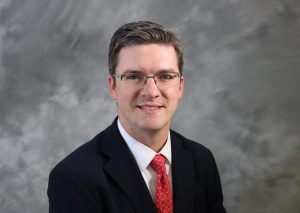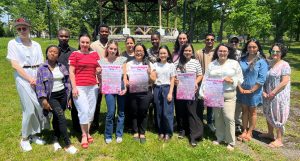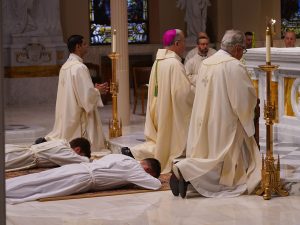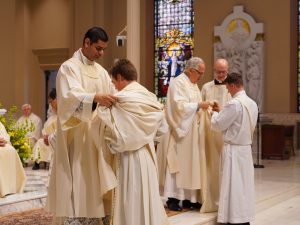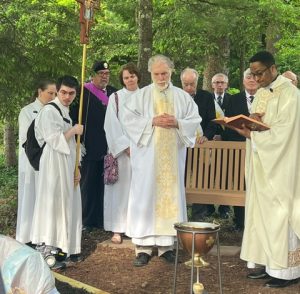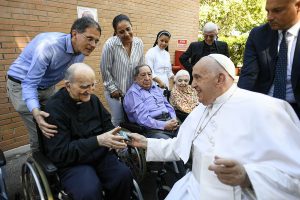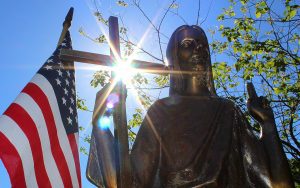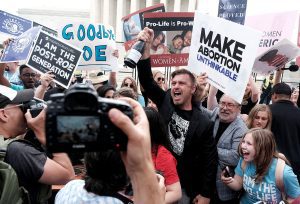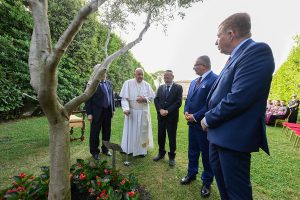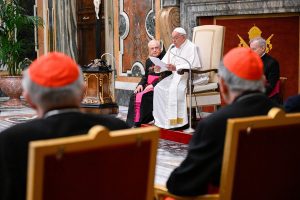SIMPSON – More than 200 people filled the pews of Saint Michael’s Church one final time June 2, 2024, as a closing liturgy was held for the worship site which has served the Simpson community for more than 121 years.
“Our hearts are heavy, but we give thanks to God for having been able to encounter him in this sacred place,” lector Jean Yamialkowski said in welcoming the faithful to the 2 p.m. Mass. “Words from our Centennial Mass, spoken by Father Hilary Malinowski, continue to have meaning for us today. He said, ‘Here our faith life began, grew and continues to mature. As we look around and feel so much at home today, may we be warmed, enriched and empowered to take with us from this holy place, the most Sacred Presence of God to accompany us on our journey to our eternal home with him.’”
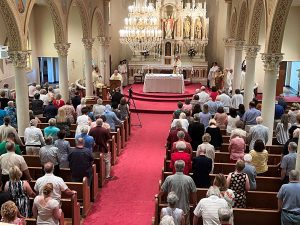
The Most Rev. Joseph C. Bambera, Bishop of Scranton, served as principal celebrant and homilist for the closing liturgy. Father Seth D. Wasnock, V.F., Pastor, Saint Rose of Lima Parish and Our Lady of Mount Carmel Parish, Carbondale, and Father Joseph J. Mosley, Senior Priest, concelebrated the Mass, along with several other priests who were native sons of Saint Michael’s or who had served the church.
“Saint Michael’s Parish was founded to serve a growing community of predominantly Polish immigrants who journeyed to this portion of God’s kingdom to build a better life for themselves and their families,” Bishop Bambera said during his homily. “My dad’s grandparents, Jacob and Antoinette Pilny, were among its founding members. Ten years after it was established, my mom’s parents, John and Blanche Kucharski, arrived in White’s Crossing after immigrating from Poland a few years earlier and joined Saint Michael’s Parish.”
Bishop Bambera shared several personal, family memories of Saint Michael’s Church because he wanted the faithful to know that it was okay to be both sad and hopeful about the changes that are occurring.
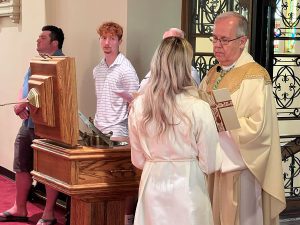
“Let your minds wander a bit today. It’s a good thing to do, a healing experience for all of us, a moment to remember our lives in relationship to Saint Michael’s Church,” the bishop explained. “This day is not only a day of remembrance but a day of gratitude. Gratitude first for the abiding presence of God within us … Gratitude for the bond that exists among us as sharers in the one Body of Christ …. And gratitude for the privilege of being chosen by God to be his presence in our world.”
Following the distribution of Holy Communion, the closing ritual for the church took place. It involved Bishop Bambera and Deacon Patrick J. Massino processing to various parts of the worship site and offering specific prayers. They stopped at the baptismal font, confessional, Stations of the Cross, Statue of the Blessed Mother, Statue of Saint Michael the Archangel, ambo and altar.
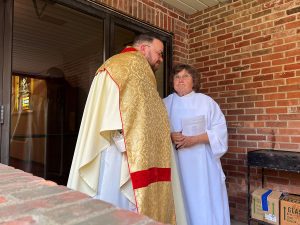
Following the procession, all parishioners in attendance were invited to come into the sanctuary of the church one final time to reverence the altar with a bow or a kiss. They then proceeded to the back parking lot, after which time the doors of the church were locked for the final time by Joan Fendrock, who has served as the parish sacristan for more than two decades.
“I think everyone had a little hurt in their heart today, but we have to put it in the Lord’s hands. He will not abandon us. We have turned another chapter in our 121 years,” Fendrock said.
As the closing liturgy took place, Fendrock took Bishop Bambera’s advice, allowing her mind to reflect on the first Easter she celebrated in Saint Michael’s Church 56 years ago. At that time, the Mass was still celebrated in Polish – and to have Polish hymns incorporated into the closing Mass at points brought everything full circle – and put a smile on her face.
“The Lord will never abandon us. We may have trials and sadnesses and sorrows in our lives, but he is always there to carry us over them,” she added.
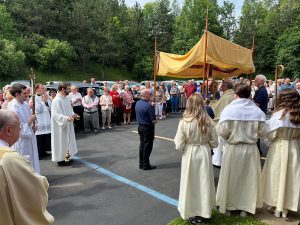
The decision to close Saint Michael’s Church came as part of the Vision 2030 Process, in which the parishioners of Saint Rose of Lima Parish and Our Lady of Mount Carmel Parish have been engaged for several years. When analyzing the priority drivers, it was determined that basic operational costs of Saint Michael’s averaged $66,000 annually and the offertory collected was insufficient to meet those needs, in addition to facility studies indicating the church would need more than $800,000 in maintenance over the next decade.
At the conclusion of the closing liturgy, Bishop Bambera led the Blessed Sacrament on a Eucharistic Procession. The faithful processed by vehicle to Our Lady of Mount Carmel Church, from which they processed on foot to Saint Rose of Lima Church where Benediction of the Blessed Sacrament took place, and a reception was held.
While enjoying refreshments, parishioners also got to enjoy a pictorial slideshow of memories from Saint Michael’s and Holy Trinity churches.
The Sunday 11:30 a.m. Mass which was normally held at Saint Michael’s Church will now be held at Saint Rose of Lima Church in Carbondale.

